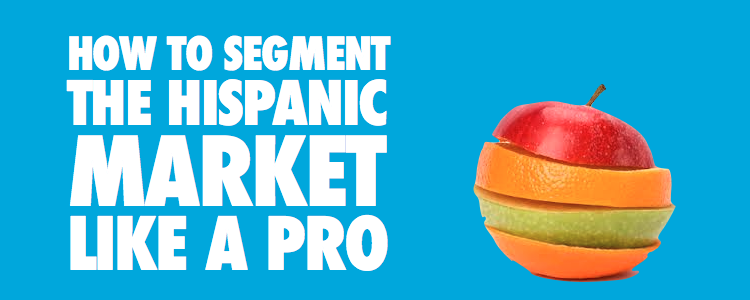Hispanic Acculturation Secrets Unveiled
Hispanic Acculturation secrets were unveiled at the Keynote Speech given by Claudia Goffan, Hispanic Marketing expert and Target Latino CEO, at Hispanic Day on the Hill and she reveals some of them on this article.
As you may be aware, the Kansas Hispanic & Latino American Affairs Commission, with the office of Governor Sam Brownback, proclaimed Hispanic Day on the Hill at the Capitol in Topeka, Kansas that this year took place on April 1st- a day wherein Hispanics from Kansas come together to obtain updated information on key policy and meet with their legislators at the Capitol, and I was called to deliver a keynote speech on Hispanic marketing.
First of all, I’d like to thank the Kansas Hispanic and Latino American Affairs Commission with the office of Governor Sam Brownback for selecting me as their keynote speaker for such an important event for both their Latino and political communities. I was truly honored by the request.
I would also like to extend a special thanks to Adrienne Foster, Executive Director of KHLAAC and Mayor of Roeland Park, for organizing such an outstanding and highly attended event and for making me feel so welcome and introducing me to such a distinguished group of people.
I was positively impressed by Governor Sam Brownback who opened his home to us, for his eagerness to learn and understand the issues that concern the Kansas Latino community and Latinos in general.
I was overwhelmed by the impact my presentation made and the number of positive comments received from the audience. I hope the understanding of cultural differences and similarities continues as I see the impact it could exponentially have in the immediate future on the improvement of relationships with Latinos in Kansas and in the rest of the United States.
The audience was entertained and surprised when they found out that every 30 seconds a U.S. Hispanic turns 18 years old. Happy birthday!!! By the sheer numbers alone, the Hispanic market has become a key demographic, not just in states like California, Florida, Texas and New York but in Kansas as well.
The Kansas landscape has changed dramatically since the 2000 U.S. Census. The state’s Hispanic population grew by 59 percent over the past decade. There are over 301,000 Hispanics that reside in Kansas – the 17th largest Hispanic population share nationally- and more than 37% of them are eligible to vote (higher than North Carolina with only 24%). And while U.S. Hispanics have a purchasing power of $1.2 trillion as of 2012, Kansas Latinos purchasing power is $5.6 billion and Kansas Hispanic businesses generated $1.3 billion in 2012.
Hispanic households spend almost as much as general market households and they earn about 70% of what these earn. Therefore and in relative terms, Hispanic households spend more. (Hispanic households spend approximately $40,123 each year, compared to $46,409 for general U.S. households. This gap is shrinking at a very fast pace)
Unfortunately, many of America’s corporations – and it is definitely not limited to them – hang on to stereotypes instead of learning about the Hispanic culture and how it shapes the identity of Hispanic consumers and their communities. This disconnect makes it difficult for these companies to build trust, truly engage with, and begin to value U.S. Hispanics as viable consumers. After all, the ability to identify with an advertisement or a message is affected by identification with a society or the culture of that society.
And what is culture but a mental map which guides us in our relations to our surroundings and to other people? It may be tied to ethnicity on occasions but not necessarily so. Thus, the culture of people that live in the city will be different that the ones that live in a farm and so on. Understanding Hispanic acculturation becomes crucial to understanding the Hispanic culture tapestry that has been weaved in the U.S. and makes it different from the ones in their respective countries of origin.
Several years ago, I shared an article on the Hispanic Acculturation process and understanding segmentation on this same blog. Today, these circles still represent culture more than ever. Not segments. Not slices of the population. Cultures. Everybody in the Venn diagram below is Hispanic and depicting today’s reality that about 70% of Hispanics are bi-culturals (and bilinguals to a certain degree) why are we still debating on what language to address this population and not concentrating on what message will resonate better depending on the level of Hispanic Acculturation? Bi-culturals have two sets of cultures, two sets of maps with which to interpret behaviors, messages, thoughts and everything they do as members of a society.
Bi-cultural Hispanics have two sets of codes and they can switch between them just as they can switch languages but only one can be prevalent at a time. Culture works in the same way than language. It can even be mixed and matched, conjugated, re-invented. Understanding Hispanic acculturation is one of the elements to understanding U.S. Hispanics. But remember that no one knows their own culture fully and to understand culture, you have to understand other cultures and their similarities and differences.
Of course, these are just a few of the Hispanic acculturation secrets. I promise there will be more in the future. Meanwhile, I hope that what has begun here is a long lived effort and the example is followed by many others.
Thoughts of the Day











